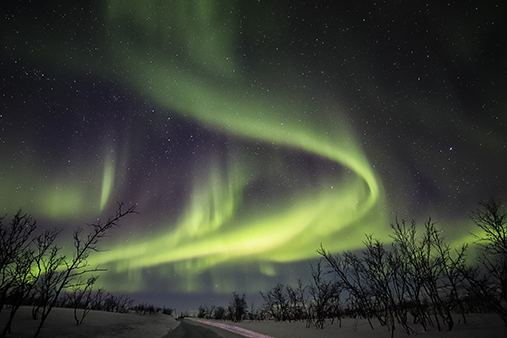The PhD defence and trial lecture will be streamed. The chair of the defence will moderate the disputation.
Ex auditorio questions: the chair of the defence will invite the audience physically present in the auditorium to ask ex auditorio questions.
→ Live streaming of trial lecture and disputation
→ Request for thesis copy (available until the disputation starts)
Trial lecture
Time and place: March 8th, 2024; 11:15 AM, Store Fysiske Auditorium (V343) - Fysikkbygningen
Title: "Auroras on other planets”
Main research findings
Space weather affects life on Earth in a variety of different ways. One of the arguably most well-known and recognizable space weather effects are the auroras (aurora borealis and aurora australis for the northern and for the southern hemisphere, respectively). Auroras can be seen when the solar wind reaches the Earth which allows for energy transfer from the solar wind directly into the Earth’s upper atmosphere. This source of free energy can lead to the formation of structures of a variety of different scales in the ionosphere, a layer in the Earth’s upper atmosphere.
Space weather also affects positioning systems, such as GPS systems, which use radio waves for communication between the satellite and the receiver on the ground. The path of these electromagnetic signals depends on plasma structures in the ionosphere. Understanding the formation and evolution of these plasma structures is thus of importance for, amongst others, the further development and improvement of positioning systems.
In order to quantify plasma structures of different scales, this thesis examines the energy that is contained in plasma structures of different sizes, and how this energy is being redistributed, by means of in-situ measurements from rockets and satellites. Additional analysis of for example the velocity of the plasma and the Earth's magnetic field variations give further insights on the formation of plasma structures in the high-latitude ionosphere.

Adjudication Committee
- Dr. Kirsti Kauristie, Finnish Meteorological Institute, Finland.
- Dr. Karl M. Laundal, University of Bergen, Norway
- Associate Professor Nina Frederike Jeppesen Edin, University of Oslo, Norway
Supervisors
-
Professor Wojciech J. Miloch, Department of Physics, University of Oslo, Norway
-
Professor Lasse B.N. Clausen, Department of Physics, University of Oslo, Norway
-
Associate Professor Andres Spicher, Department of Physics and Technology, UiT - The Arctic University, Tromsø, Norway
-
Dr. Sigvald Marholm, Department of Computational Materials Processing, Institute for Energy Technology, Kjeller, Norway
Chair of defence
Professor Andreas Görgen, Department of Physics, University of Oslo, Norway
Contact information to Department: Line Trosterud Resvold
